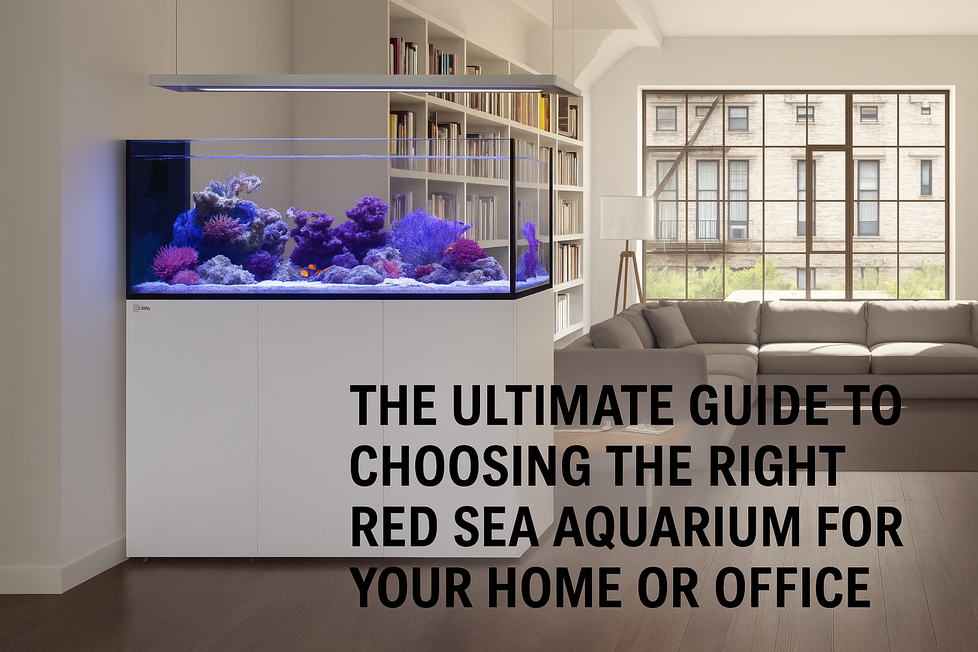Support Plant Growth, Enhance Fish Colour, and Control Algae Naturally
Lighting in an aquarium is about much more than just making your tank look good. The spectrum and intensity of light you choose can have a significant effect on the growth of plants, the behaviour and coloration of fish, and even the development of algae. Whether you’re running a low-tech freshwater setup or a high-energy aquascape, choosing the right light spectrum and intensity is key to long-term success.
What Is Light Spectrum in an Aquarium?
Light spectrum refers to the colour composition of the light emitted by your fixture. It’s usually measured in Kelvin (K), which tells you how “warm” (yellow/red) or “cool” (blue/white) the light appears.
Common Spectrum Ranges:
• 2700K – 3500K (Warm White): Rich in red light, ideal for some plant growth but may look overly yellow.
• 5000K – 6500K (Daylight/Natural White): Balanced light that mimics natural sunlight—perfect for planted tanks.
• 10,000K+ (Cool White/Blue-Tinted): Crisp white to blue light, more common in marine tanks but sometimes used for visual appeal in freshwater tanks.
Why Spectrum Matters for Planted Aquariums
Plants use specific parts of the light spectrum for photosynthesis, primarily:
• Red light (600–700nm): Stimulates root development and overall growth
• Blue light (400–500nm): Promotes healthy leaf and stem structure
• Green light (500–600nm): Less useful for photosynthesis, but enhances visual vibrancy
A balanced spectrum should contain strong red and blue peaks while minimizing green where possible (though some green is fine for natural colour rendering).
💡 Tip: Many premium LED lights now offer full-spectrum setups or even customizable RGB lighting to dial in specific plant responses and visual preferences.
Understanding Light Intensity
Light intensity refers to how much light reaches your plants and is usually measured in PAR (Photosynthetically Active Radiation) or lux. While PAR meters give the most accurate reading for plant growth, most hobbyists rely on general lighting classifications:
Low Light
• Best for: Java Fern, Anubias, Crypts, mosses
• Ideal for: Low-tech tanks without CO₂
• Fixture Types: Entry-level LEDs, T8 fluorescents
Medium Light
• Best for: Amazon Swords, Vallisneria, stem plants
• Ideal for: Tanks with occasional trimming and fertilizer use
• Fixture Types: Mid-range LEDs, T5 HO systems
High Light
• Best for: Carpet plants (Monte Carlo, Dwarf Hairgrass), red plants
• Ideal for: Aquascapes with CO₂ injection and regular maintenance
• Fixture Types: High-end LEDs, metal halide (rare in freshwater)
Warning: High light without CO₂ supplementation and nutrient balance often leads to aggressive algae growth. Balance is everything.
Matching Light to Your Tank Goals

What to Look for in a Light Fixture
• Spectrum control: Adjustable RGB or full-spectrum is ideal
• Dimmable output: Allows you to fine-tune intensity for different plant needs
• PAR ratings or depth recommendations: Ensures it reaches the substrate in taller tanks
• Mounting options: Light should evenly cover the tank surface with no dark spots
💬 Need Help Choosing?
At Charterhouse Aquatics, we offer a wide range of freshwater lighting—from beginner-friendly LEDs to pro-level plant-growing systems like Twinstar, Chihiros, and EcoTech Radion Freshwater. If you’re unsure what spectrum or intensity you need, our team is always happy to help you make the perfect choice.


